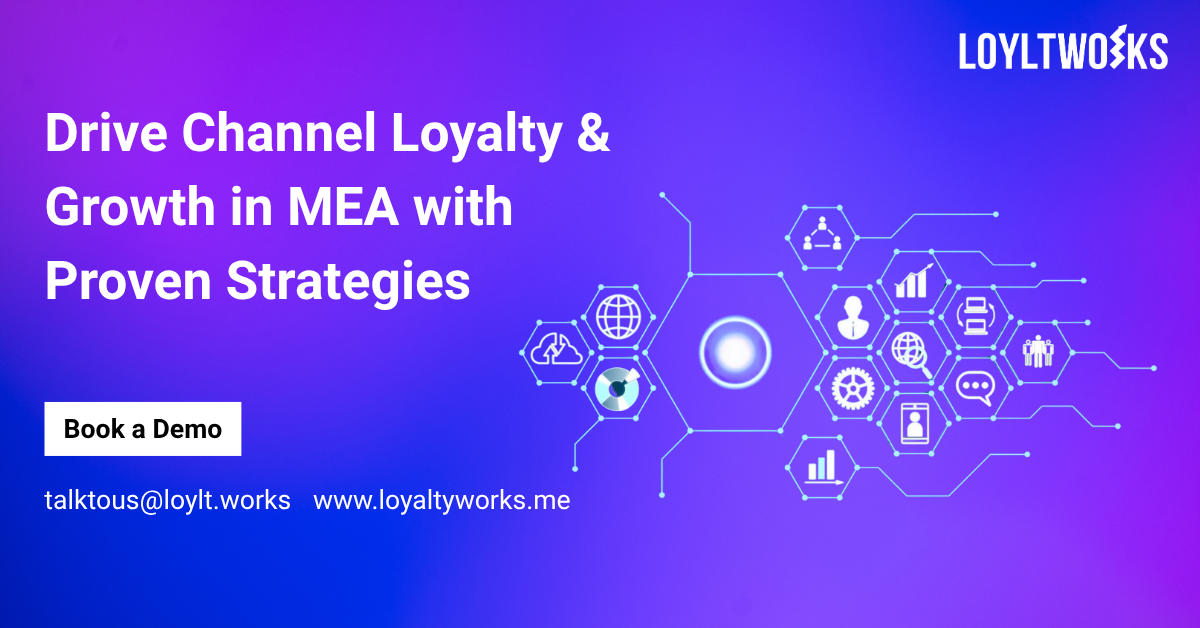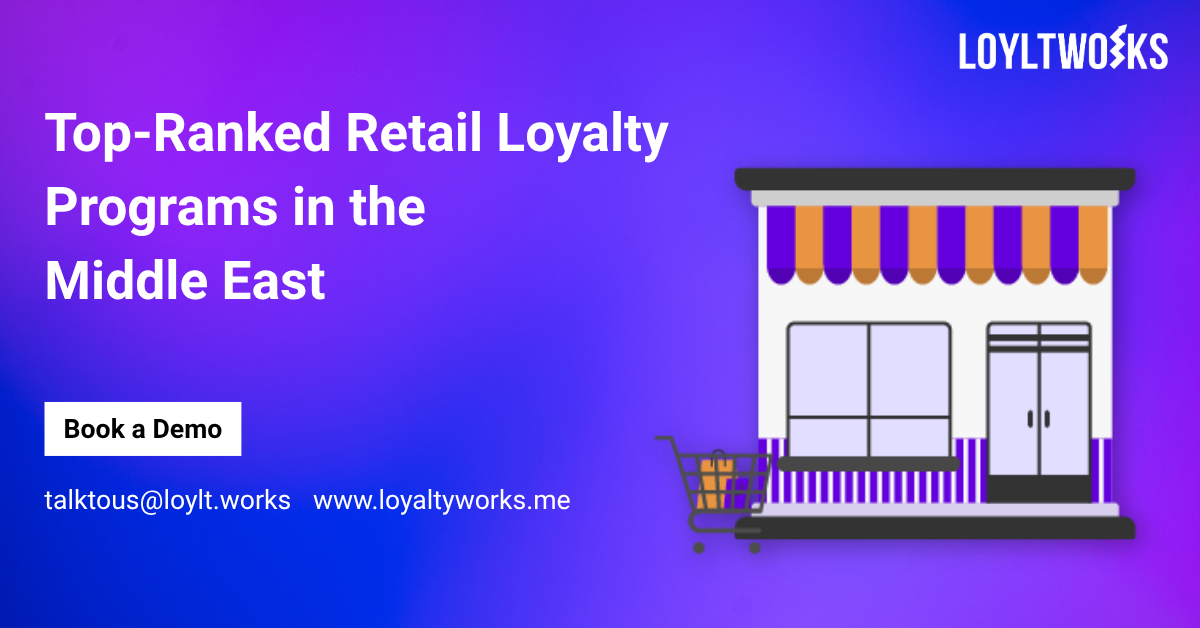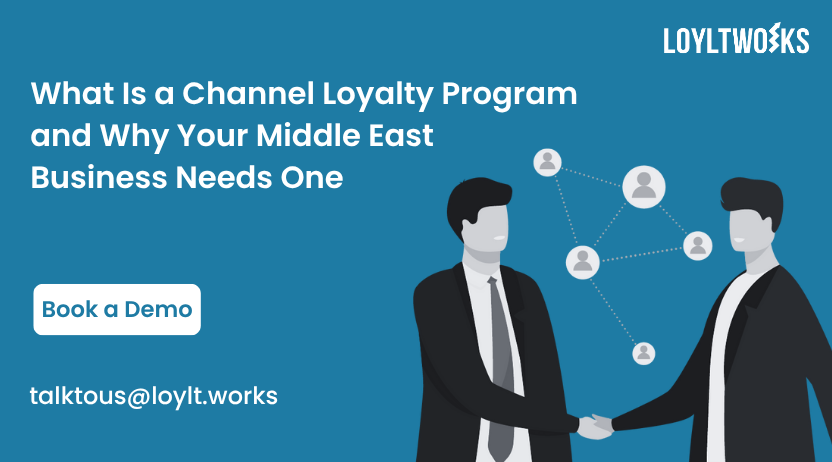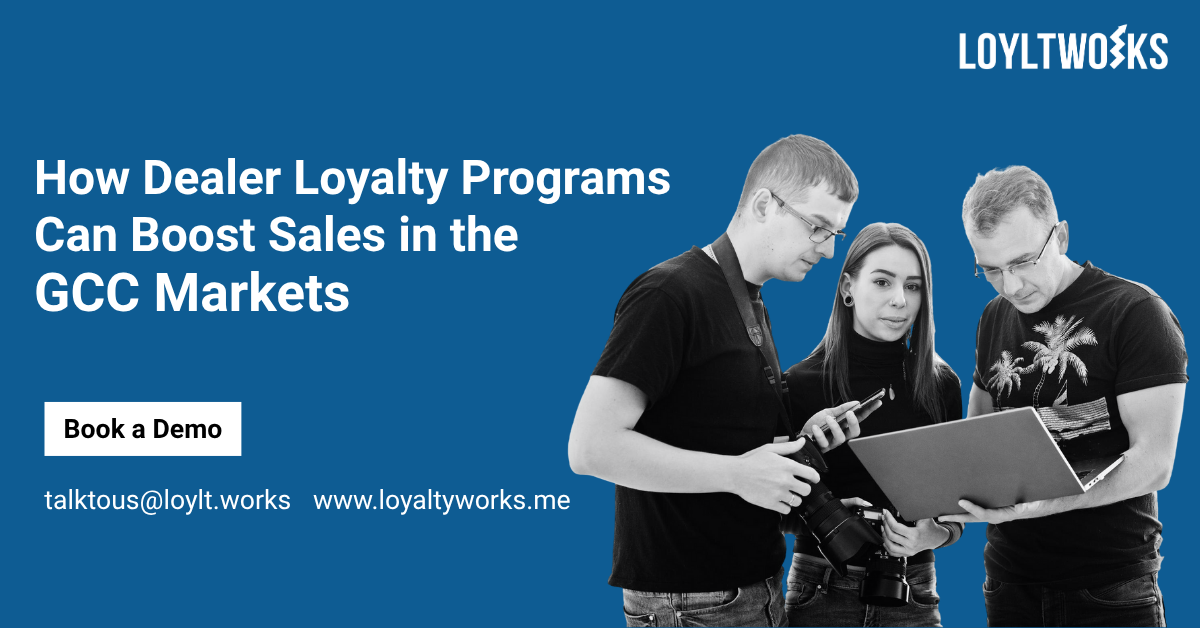

Top Strategies to Build a High-Performing Channel Loyalty Program in MEA
Posted on 22-07-2025 by Prashanth M
Channel loyalty programs are no longer a luxury in today’s dynamic and highly competitive B2B ecosystem—they are a strategic necessity. Businesses that rely on indirect sales channels must ensure their partners are not just active but truly motivated and aligned with their brand’s goals.
Table of Contents
- 1. Why Channel Loyalty Programs Matter in MEA
- 2. Localize Rewards and Communication
- 3. Segment Your Partners by Maturity and Role
- 4. Digitize Smartly – But Flexibly
- 5. Align Incentives with Business Goals
- 6. Provide Strong Onboarding and Support
- 7. Leverage Data to Drive Personalization
- 8. Build Trust and Transparency
- 9. Conclusion
In the MEA (Middle East and Africa) region, building and scaling a successful channel loyalty program requires more than just replicating global templates. The region is incredibly diverse—linguistically, culturally, and digitally—which makes a cookie-cutter approach ineffective. Instead, companies must adopt localized, flexible, and data-informed strategies that resonate with specific partner segments across different markets.
This blog outlines practical, actionable strategies to create high-performing channel loyalty programs in MEA. These strategies are grounded in real-world insights into partner behavior, regional market dynamics, and emerging B2B loyalty trends—designed to help you unlock sustained partner engagement and long-term growth.
Why Channel Loyalty Programs Matter in MEA
The MEA region presents enormous growth opportunities for global and local brands alike. From large distributors in the UAE and Saudi Arabia to independent resellers in Nigeria and Kenya, your channel partners play a crucial role in expanding reach, improving customer service, and driving sales velocity.
A thoughtfully designed channel loyalty program does more than just reward transactions. It strengthens relationships, builds trust, and creates a shared sense of purpose between vendors and their partners. In regions where business is often relationship-driven, these loyalty mechanisms can become powerful differentiators.
Yet, MEA’s diversity also brings complexity:
- Language Diversity: Arabic in the Gulf and North Africa, French in parts of West and Central Africa, English in South Africa and Nigeria, plus regional languages like Swahili and Amharic.
- Cultural Variations: Preferences for reward types, communication styles, and business protocols vary significantly from market to market.
- Digital Maturity Gaps: While some countries boast advanced tech infrastructure (e.g., UAE, South Africa), others are still developing digital capabilities, especially in rural or underserved regions.
To succeed, brands must navigate this landscape with precision and empathy. The following strategies will help you design and implement a channel loyalty program that not only aligns with MEA’s unique market dynamics but also drives measurable business outcomes.
Localize Rewards and Communication
Why it matters: A reward or message that resonates with a partner in Dubai might fall flat with one in Nairobi or Casablanca. In the MEA region, partners come from a wide range of cultural, linguistic, and socioeconomic backgrounds. This diversity means a “one-size-fits-all” approach to rewards and communication is unlikely to be effective—or even well-received.
A successful channel loyalty program in MEA must speak the local language—literally and figuratively. By localizing both the incentives and the way you engage with partners, you show respect for their unique contexts and create a more personalized, motivating experience.
Strategy:
- Offer region-specific rewards: Move beyond generic incentives. Instead, provide locally relevant options such as prepaid gift cards that work with regional retailers, culturally valued travel experiences, or mobile wallet transfers (e.g., M-Pesa in East Africa or STC Pay in Saudi Arabia). The goal is to offer tangible value within each partner’s local economic and lifestyle context.
- Multilingual communication: Language is a critical trust-builder. In MEA, English alone won’t suffice. Ensure all promotional materials, program dashboards, onboarding content, and training assets are available in Arabic and French, particularly in the Gulf and North African regions. For East and West African markets, English is more common, but even here, simplicity and localization in tone matter.
- Cultural relevance: Tailor your loyalty campaigns around local holidays, religious observances, and seasonal business cycles. For example, create special incentive bursts during Ramadan, Eid, Christmas, or back-to-school periods when purchasing behaviors shift. Also, be mindful of working week differences, such as the Sunday–Thursday workweek in the GCC.
Tip:
Use regional influencers, respected industry figures, or successful partner champions to help evangelize your program internally. Having a familiar face or voice share their success story in the local language can significantly boost credibility and program adoption.
Segment Your Partners by Maturity and Role
Why it matters: Not all channel partners are created equal. They vary in size, capabilities, focus areas, and digital readiness. Treating all partners the same—whether a large distributor in Riyadh or a small reseller in Kampala—dilutes the effectiveness of your channel loyalty program. Without segmentation, high-performing or strategically important partners may feel undervalued, while emerging partners may feel overwhelmed or underserved.
Segmenting your partners allows you to tailor rewards, communication, and enablement to each group’s unique needs, which improves engagement, drives results, and optimizes resource allocation.
Strategy:
- Segment by partner type: Different roles require different incentives. Distributors might be more focused on volume and logistics, while VARs (Value-Added Resellers) are often looking for technical training and co-marketing support. Resellers may prioritize quick wins and price-based incentives. Customizing your loyalty offerings based on these roles increases relevance and impact.
- Segment by performance tier: Introduce tiered loyalty structures—such as Bronze, Silver, Gold, and Platinum—with increasing rewards, exclusive benefits, and recognition as partners climb the ranks. This not only motivates performance but also creates aspirational goals that encourage deeper brand alignment.
- Segment by digital maturity: Digital adoption varies widely across MEA. While a partner in the UAE may be fully integrated with CRM and e-commerce tools, a partner in less digitized markets may still rely on manual processes. Provide advanced digital tools and self-service portals for mature partners, while offering more personal onboarding, printed materials, or phone-based support for those in earlier stages of digital transformation.
Example:
A tech-savvy VAR in South Africa using CRM and marketing automation tools may thrive on a points-based system with real-time digital dashboards, automated updates, and personalized incentives. In contrast, a regional distributor in Ethiopia—where internet access may be inconsistent—might benefit more from offline engagement, such as SMS-based reward notifications, paper-based claims processes, or personal outreach from a channel manager.
Digitize Smartly – But Flexibly
Why it matters: While digital transformation is accelerating across the MEA region, it is far from uniform. Countries like the UAE and South Africa boast high internet penetration and mature digital ecosystems. However, in many other parts of Sub-Saharan Africa or rural North Africa, partners may still face challenges related to connectivity, device accessibility, and digital literacy.
An overly complex or tech-heavy channel loyalty program can alienate or exclude valuable partners who aren’t ready for full digital adoption. To ensure broad participation and effectiveness, it’s crucial to strike a balance—leveraging digital tools where appropriate while offering flexible alternatives where needed.
Strategy:
Mobile-first design: In many African markets, mobile is not just the primary internet access point—it’s often the only
one. Design loyalty portals, dashboards, and reward redemption interfaces with a mobile-first approach. Ensure fast
loading times, simple navigation, and compatibility with lower-end smartphones to accommodate partners across all
regions.
Offer hybrid platforms: While digital engagement is vital, it shouldn’t be the only option. Complement your digital
platform with WhatsApp groups for announcements, SMS updates for points or rewards, and call center support for partners
who prefer voice-based interactions. This hybrid model ensures inclusivity and meets partners where they are.
Use regional data centers: Hosting your loyalty program’s infrastructure in or near MEA markets—such as in the UAE,
South Africa, or Kenya—can significantly improve platform performance. Faster access, minimal latency, and higher
reliability contribute to a smoother user experience, especially in regions with bandwidth limitations.
Pro Tip: Include offline capabilities in your mobile apps where possible (e.g., forms or progress tracking that syncs
once the user is back online), ensuring usability even in low-connectivity zones.
Align Incentives with Business Goals
Why it matters: A successful channel loyalty program isn’t just about handing out rewards—it’s about reinforcing the
right partner behaviors that drive business growth. Incentives that aren’t aligned with your strategic objectives may
create short-term activity but fail to deliver long-term value. To be truly effective, loyalty programs in MEA (or
anywhere) must tie rewards directly to the business outcomes you want to achieve.
Whether your goals are to boost product adoption, improve technical capabilities among resellers, accelerate lead
generation, or increase deal velocity—your loyalty structure should reinforce those behaviors consistently.
Strategy:
Reward behaviors, not just outcomes: Don’t limit your incentives to closed sales or revenue milestones. Encourage
partners to engage with your brand and ecosystem by offering points or bonuses for non-revenue activities that lead to
future sales—such as completing product training, obtaining certifications, registering leads, participating in
marketing campaigns, or upselling high-margin solutions. This approach builds deeper partner competency and loyalty over
time.
Introduce gamification: Incorporate game-like elements into your program to make it more engaging and competitive. Use
leaderboards to highlight top-performing partners, badges to recognize achievements (e.g., “Certified Pro” or “Top
Trainer”), and monthly or quarterly challenges to keep momentum going. This drives friendly rivalry and sustained
engagement, especially when paired with meaningful recognition and rewards.
Use real-time tracking: Transparency and instant feedback matter—especially in digital-savvy MEA markets like the GCC
and South Africa. Provide partners with access to a live dashboard where they can see their points, progress toward
rewards, upcoming opportunities, and leaderboard position. This visibility empowers partners to take action and stay
motivated.
Insight: In emerging MEA markets, even simple progress notifications via SMS or WhatsApp (e.g., “You’ve earned 200
points this week!”) can create a powerful sense of momentum and reward.
Provide Strong Onboarding and Support
Why it matters: The first impression of your channel loyalty program can make or break partner participation. In MEA
markets—where language, culture, and digital familiarity vary widely—poor onboarding often leads to early disengagement.
Partners may sign up with enthusiasm but drop out quickly if they feel confused, unsupported, or disconnected from the
program’s value.
A structured, localized, and relationship-driven onboarding process is essential to ensure that partners not only
understand the program but also feel confident and motivated to participate actively.
Strategy:
Localized onboarding kits: Equip new partners with welcome materials that are easy to understand and culturally
relevant. These should include welcome videos, step-by-step user guides, reward explanations, and training resources,
all available in local languages such as Arabic, French, and English. Make sure these resources are mobile-friendly and
accessible offline, especially in regions with limited connectivity.
Partner success managers: Assign dedicated regional representatives or partner success managers who understand local
business norms and languages. These individuals can provide hands-on onboarding, resolve queries, and serve as a direct
line of communication. In relationship-driven cultures like the Gulf and parts of East and West Africa, having a
familiar, responsive point of contact significantly improves partner retention and satisfaction.
Regular touchpoints: Keep engagement alive post-onboarding with monthly check-ins, regional webinars, product update
sessions, and quarterly feedback surveys. These touchpoints not only reinforce learning and promote new incentives but
also show partners that their voice matters. Listening to partner feedback and making program adjustments builds trust
and encourages long-term commitment.
Tip: Celebrate early wins publicly—such as the first reward redemption or certification completed by a new partner—to
build excitement and social proof across your channel network.
Leverage Data to Drive Personalization
Why it matters:The MEA region is incredibly diverse—not just across countries, but within them. Partners vary by size,
vertical, digital maturity, and cultural preferences. What drives engagement in Morocco might not resonate in Nigeria or
Oman. To keep your channel loyalty program relevant and effective across such a broad landscape, data-driven
personalization is critical.
By leveraging data, you can uncover what motivates each segment, where they struggle, and how to better serve
them—ultimately increasing partner satisfaction, loyalty, and performance.
Strategy:
Track partner activity:Implement tracking tools to capture key behaviors within your loyalty platform—logins, training
completions, reward redemptions, deal registrations, and more. This helps you understand who’s engaged, who’s at risk of
dropping off, and which parts of the program are driving the most value.
Personalize experiences: Use collected data to tailor experiences for individual partners or partner segments. For
example, if a reseller in Kenya frequently completes training but hasn’t registered leads, prompt them with content or
incentives focused on lead submission. Recommend relevant rewards, certification paths, or cross-sell opportunities
based on what they’ve shown interest in.
A/B test campaigns:Don’t assume what works in one region will work everywhere. Run A/B tests across different countries
or partner profiles to compare the effectiveness of messages, incentive types, or communication formats (e.g., email vs.
WhatsApp). This allows you to continuously refine your approach and localize your loyalty marketing efforts with
precision.
Pro Insight:Even small adjustments—such as using local idioms or tweaking imagery to reflect regional contexts—can
significantly increase partner response rates and overall program effectiveness.
Build Trust and Transparency
Why it matters:In many MEA markets, business relationships are built on trust, reputation, and long-term value—not just
transactions. Channel partners often operate in close-knit communities where word-of-mouth and interpersonal networks
matter deeply. If your channel loyalty program lacks clarity, fairness, or accountability, it can quickly lose
credibility—and participation.
To build lasting engagement, your loyalty program must be grounded in transparency and earn your partners’ trust at
every step.
Strategy:
Clear rules and transparent earnings:Clearly define how points are earned, when rewards are unlocked, and how long they
remain valid. Avoid vague terms or overly complex mechanics. Use simple, localized language and visual aids (e.g.,
progress bars, calculators) to show partners exactly what actions lead to which rewards. Transparency reduces friction,
builds confidence, and encourages consistent participation.
Instant recognition: Don’t wait until the end of the quarter to celebrate a partner’s success. Offer real-time
recognition through automated badges, instant point updates, and public shoutouts on leaderboards or within partner
communities. Recognition—especially when visible to peers—can be just as motivating as the rewards themselves and helps
create a sense of momentum and pride.
Protect partner data: Data security is a rising concern across MEA. Partners want to know that their personal and
business information is handled responsibly. Make sure your program complies with local regulations such as POPIA
(Protection of Personal Information Act) in South Africa, and data sovereignty laws in the GCC. Communicate your
compliance practices clearly, and offer opt-ins for marketing or third-party data sharing.
Trust Tip: Consider publishing an annual “Loyalty Impact Report” or summary that shows how many rewards were
distributed, which partners achieved top tiers, and how feedback shaped improvements. Transparency fosters credibility
and reinforces long-term commitment.
Conclusion:
One Region, Many Markets – One Unified Strategy
The MEA region is a mosaic of cultures, languages, economies, and digital landscapes. Designing a channel loyalty
program that performs across such a diverse environment requires more than just incentives—it demands strategy, empathy,
and adaptability.
Success comes from embracing this diversity, not working around it. That means taking the time to understand local
partner behaviors, preferences, and pain points. It means segmenting thoughtfully, communicating clearly, and offering
flexible tools and rewards that meet partners where they are. And above all, it means building trust through
transparency, consistency, and support.
By focusing on localization, smart segmentation, data-driven personalization, and ongoing partner enablement, you can
turn your loyalty program into a powerful growth engine—one that not only drives sales, but builds stronger,
longer-lasting partner relationships across MEA.
Ready to Build Your MEA Channel Loyalty Program?
Whether you’re starting from scratch or looking to optimize an underperforming program, we’re here to help. With
experience across key MEA markets and a deep understanding of regional channel dynamics, we can work with you to create
a loyalty strategy that fits your goals—and your partners—perfectly. Contact us today for a tailored consultation and
let’s turn your partner network into a performance powerhouse
Frequently Asked Questions
A successful program in MEA is localized, flexible, and data-driven. It accounts for cultural, linguistic, and digital diversity while offering relevant rewards and clear communication tailored to each partner segment.
Localize rewards and communication by offering region-specific incentives, multilingual content, and culturally relevant campaigns. Segment partners by role, performance, and digital maturity to ensure relevance.
Digital tools enhance efficiency and engagement but must be balanced with offline alternatives in less digitized markets. Offer digital dashboards for tech-savvy partners and SMS or paper-based options for others.




